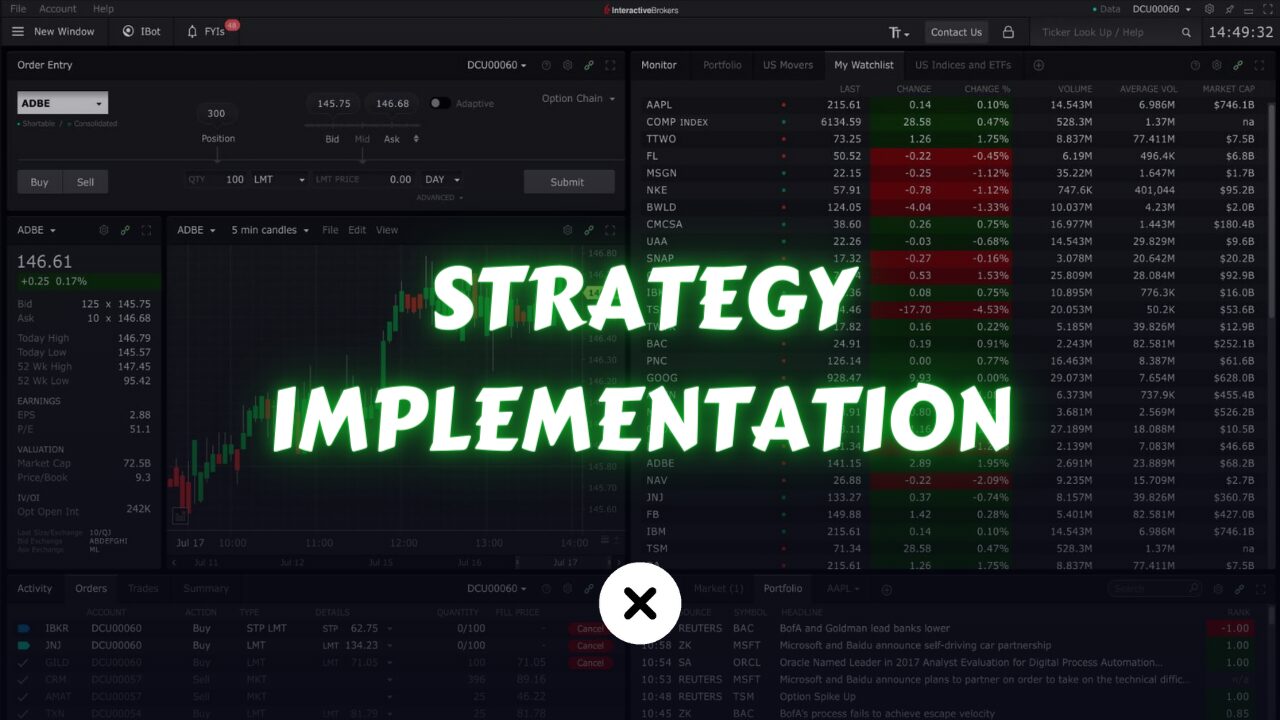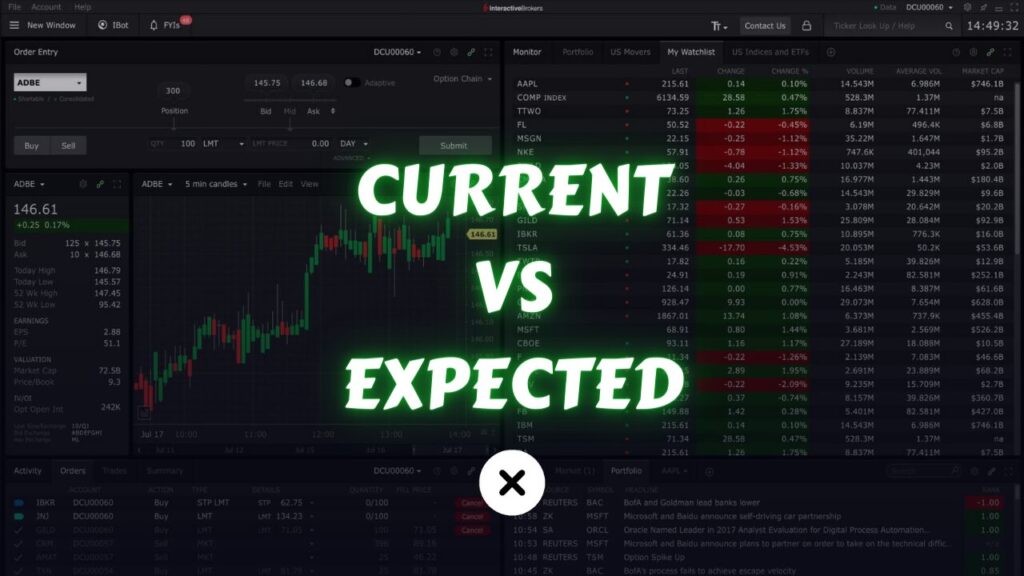
Earlier, we talked about trading strategy and trading plan. Now, let’s see how to implement a trading strategy. Implementing a trading strategy involves a series of well-defined steps that blend research, planning, execution, and continuous refinement. following a structured approach can help in achieving consistent outcomes. These steps outline the process to enhance your likelihood of generating income while minimizing the risk of negative effects.
1. Choosing the Strategy:
There are many trading strategies available online. You can choose one of these, or you might come across new patterns while using a strategy. When this happens, you can research these patterns and create a new strategy from them. You can also use basic ideas like trends, support, and resistance to find regular price patterns and build a strategy around them. Major events like CEO resignations, earnings misses, or dividend cuts can also help identify patterns to use in your strategies.
In short, there are many options for choosing a strategy, allowing you to create one from almost anything. As you trade more and gain experience, you’ll naturally find these patterns and movements, helping you discover effective strategies.
2. Research on Strategy and Trading Plan:
Once you’ve picked your trading strategy, the next step is to do thorough research. You need to find out what helps your strategy work well and what might make it fail. Collect a lot of information and review it to see what is working and what isn’t. Look at things like the best trading instruments, the best times to trade, and all the details in your trading plan. This way, you can create a better trading plan that gives you an edge.
3. Backtest Your Strategy:
After creating your trading plan, test it on historical data to see how it has performed in the past. Backtest it. If the results are good, you’re on the right track. If not, look for patterns causing losses and adjust your plan to fix these issues. Focus on key metrics like the win-loss ratio and batting average to see if the strategy is consistently profitable.
Look for past events and see how the market responded when they happened. Repeat this process multiple times.
If the backtest results are not good and the strategy doesn’t work, don’t worry. Just try another strategy.
“Your plan isn’t to find strategies that work, your plan is to find if the strategy works or not.” : Mohsen Hassan
You can backtest your strategy using Python if you know the language, or you can visually analyze the chart’s performance. There are also many online backtesting tools you can use, like the backtesting feature on TradingView.
4. Paper Trade Your Strategy:
Practice your strategy using virtual funds; many brokers offer paper trading options. This step is important—always start new strategies with simulated funds to see if you can match your backtest results in the current market.
Again, This is an important step that everyone should follow. Must…
5. Analyze Results:
While trading, keep a detailed record of all your past trades, organized by each strategy. This helps you assess how well each strategy is working. By using this data, you can calculate different ratios and metrics. Keeping a track record is very important. It’s a key factor for prop shops and big funds when they evaluate traders. Having a verified track record greatly improves your chances of getting hired.
6. Trade Live:
If your historical trade analysis shows positive results, consider starting live trading. The goal is to see if you can make real profits with actual money, knowing that real funds can affect your emotions and decision-making. Start with a small amount of money to test your ability to succeed in real trading conditions. If you can consistently make positive results with this smaller amount, you might be ready to trade with more money.
The key is to stick to your trading plan. Whether you win or lose, following your plan is crucial. This discipline is more important than the immediate financial outcome. When you begin live trading, focus on your ability to follow your plan and get real-world results.
If you succeed, consider increasing your trading account size. Look for any areas where you need improvement and make adjustments. If needed, you can practice more with paper trading to boost your skills and confidence.
Conclusion
These steps outline how to start trading with a strategy, using an iterative approach. If things don’t go as planned, you go back, do more research, adjust your strategy, and backtest the changes. You keep repeating this cycle until you get good results. If a strategy still doesn’t work after many tries, it means it’s not viable, and you should try a different strategy.
You can also run multiple strategies at the same time, allocating money based on their performance. Keeping detailed records helps you see where to improve, which strategies to scale up, and which to cut. Continuous backtesting and practice with new strategies are important. Always look for new strategies, even if your current ones are successful. Current strategies may stop working over time, but new variations might be profitable. As a trader, it’s important to innovate and regularly test new approaches to stay successful.



